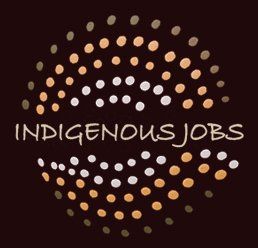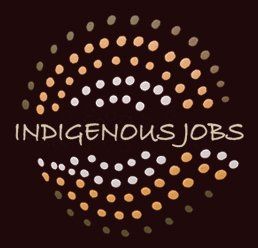Creating Impactful Indigenous Employment Strategies
Chandler Macleod has always cared to make Indigenous Employment a focus in our business. Recently, we implemented a RAP working group to help us update our RAP and ensure we are as up to date as possible with what we and all businesses can do to assist Aboriginal and Torres Strait Islander peoples with finding equitable employment.
As part of creating awareness around Indigenous Employment, we interviewed Kyra Galante, Director of Indigenous Consulting at Ergon. Kyra has shared some incredibly helpful and pertinent information for any business on how to approach their own Indigenous Employment Strategy and make positive change for equality in their company.
See the interview below.
What is the significance of truth telling in how to effectively make change?
The history of Australia has only been told through the eyes of the victor what I call the White History. The things that occurred to my people have been denied, ignored and in many instances, we have been silenced. When I was at school, I was not taught about the existence of Aboriginal and Torres Strait Islander peoples, except general and often incorrect information. The only times my people were mentioned were in the journals of Captain Cook.
Australians need to learn about and acknowledge our Indigenous history. In doing that, truth telling is important, so people have a better understanding of how this country was formed and the way Aboriginal and Torres Strait Islander people were treated as part of that.
The socio-economic disadvantage that my people experience is directly related to this past. There is a risk that this becomes accepted and normalised as “just the way things are” for Indigenous Australians but I believe there is another approach. Truth telling allows us to share information and stories about past policies and negative impacts. It also allows us to share our culture, heritage, and history with the Australian people to enrich this country. When Indigenous history is truly understood and acknowledged, Indigenous Australians can heal and work with non-Indigenous Australians towards a more inclusive country that celebrates the rich culture and heritage of this beautiful country we all love and call home.
How can we increase education for hiring managers and businesses around accelerating and supporting equality?
Hiring Managers need to do the groundwork and be committed to supporting and accelerating equality as a starting point. The reason why hiring managers and leaders need to understand is because it creates a clear “why” around Indigenous employment and participation and moves beyond “I am doing this because my company said so and gave me targets to “I am doing this because it the right thing to do.”So, starting with understanding the injustices against Indigenous peoples is critical. This is not to make people feel guilty but to assist the hiring managers to become emotionally and mentally connected and invested in this work. Where there isn’t genuine connection and understanding and old mindsets remain, nothing changes. Indigenous people can sense when there is a lack of authentic commitment and when this occurs, these efforts are nothing more than a “box ticking” exercise. This is one of the reasons why many organisations experience high turnover rates.
I recommend that businesses increase their education through cultural competence training by reaching out to Indigenous businesses. They can do this through leveraging Indigenous networks such as Ergon, Black Business, Trading Black, AGNT Blak, Indigenous Chambers across the country, or Supply Nation who can assist in referring your business to find the right person to support them in building the cultural competence of managers and businesses.
How can we remove unconscious bias in the recruitment process for Indigenous Australians?
There are a number of things you can do. One of the most effective things is to consider using anti-discrimination special measures. Simply put, this means running a targeted recruitment campaign only for Indigenous people. This means that you immediately remove many of the barriers that Indigenous candidates experience and level out the playing field so that Indigenous candidates compete against their peers. This is one way to increase Indigenous representation and when you reach a critical mass, it builds a mentoring system in the business as new starters form relationships to support each other to succeed. To be successful, you will need to establish a robust process to ensure that candidates are of Indigenous heritage. This approach removes many of the biases as you’re only sourcing Indigenous people. Another option is to use an Indigenous business to recruit for you as they are closely connected to their communities and have wider Indigenous networks than mainstream businesses and cultural competence is embedded in their ways of working and processes.
How do recruiters and businesses become change makers?
Becoming change makers starts by investing in the groundwork to learn, listen and understand Indigenous history and people. This is an essential starting point because once you understand this, it changes the way you do business with Indigenous people. Your actions then drive you to identify the barriers to employment and shifting your focus to the workplace and culture that these candidates are going to be placed into. Sustainable employment is where the social impact takes place not the placement.
Global social evidence shows the range of benefits that stem from employment beyond the income generation that goes into supporting Indigenous families and communities. It improves the quality of the life, creates role models and this creates positive intergenerational change.
Are there some specific ways to reach out to local communities now that we are all working in a mostly digital landscape?
It is important to note that not all Indigenous people have access to technology because of costs associated with broadband and computers, often inadequate infrastructure, especially in remote areas, and lower levels of digital literacy.
When reaching out to communities, it is important to have a clear understanding of the community and the best avenues to engage. This may vary from community to community. You may use Indigenous experts to reach out to the local communities who can assist in helping manage the community engagement protocols. Alternatively, if you want to go it alone be clear on who you are and represent, what you do, and why you’re reaching out to them. If it’s a partnership be clear on what type of partnership it is that you are seeking and the commercial arrangement in that partnership (ensure that it is fair) or if it’s a service, then ensure to advise them the full scope of the service.
Technology can only go so far for Indigenous people and communities, and it can certainly act as a barrier to accessing services and information. Historically, the way our ancestors have done business is engaging face to face remains a best practice way of engagement as it demonstrates commitment and develops relationships and trust.
How do businesses hold themselves accountable in terms of deliverables?
It is important to review your policies, procedures, systems, and processes and ask yourself the question “are we being inclusive with our First Nations people, or do we have barriers?” Don’t assume that you can do this yourself as you may be blind to many of the barriers yourself. If you source Indigenous people into the business, would they feel culturally and psychologically safe or not? How can you find this out?
A lot of businesses lean more towards RAPs which can assist in identifying barriers and creating a more inclusive and culturally safe working environment. However, RAPs are only as effective if they are implemented well and in partnership with First Nations people who guide, advise and support its implementation. I have seen businesses achieve great outcomes by being held accountable to their RAP. Conversely, I have seen others who use it to access contracts as a supporting document to the tenders but there is little substance and impact. In the latter case, this is a tokenistic exercise in ticking the box.
How helpful or important is it to include your entire business in the RAP process, and to communicate these goals transparently?
As John Heywood the English writer states, “More hands make light work” and we know that to be true. Every business has a purpose and a vision and every person who works in that business is responsible and accountable to contribute to that as part of their roles. This is the same with Reconciliation Action Plans. They are everyone’s business. They are not just the responsibility of the RAP Working Group and especially not the sole accountability of Indigenous people in the business. Dr. Anita Heiss said it perfectly at her book launch in Brisbane Our Race for Reconciliation where she stated “The Reconciliation movement may have been established with First Nations people, however, we need to hand the baton over to the Australian people to do the work now. We don’t need to reconcile with ourselves that is the work of the Australian people to reconcile with us. And the heavy lifting in any RAP process should be done by non-Indigenous Australians”
Source: https://www.chandlermacleod.com/creating-impactful-indigenous-employment-strategies

